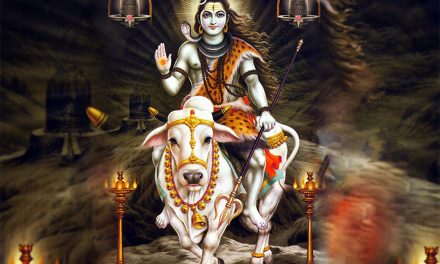Holi or Holika, also called holikotsava, is an extremely popular festival observed throughout the country (India). It is especially marked by unmixed gaiety and frolics and is common to all sections of the people.
This festival is very ancient. Known originally as ‘Holika’ it has been mentioned in very early religious works such as Jaimini’s Purvamimamsa-sutras and Kathaka-grhya-sutras. It must have therefore existed several centuries before Christ. It was at first actually a special rite performed by married women for the happiness and well-being of their families and the full moon (Raka) was the deity worshipped by them.
There are two ways of reckoning a lunar month: purnimanta and amanta. In the former, the first day starts after the full moon; and in the latter, after the new moon. Though the latter reckoning is more common now, the former was very much in vogue in the earlier days. According to this purnimanta reckoning, Phalguna purnima was the last day of the year and the new year heralding the Vasanta-rtu (with spring starting from next day). Thus the full moon festival of Holika gradually became a festival of merrymaking, announcing the commencement of the spring season. This perhaps explains the other names of this festival: Vasanta-Mahotsava and Kama-Mahotsava.
According to the stories in the Puranas and various local legends, this day is important for three reasons.
1) It was on this day that Lord Siva opened his third eye and reduced Kamadeva (the god of love, Cupid or Eros) to ashes.
2) It was on this day that Holika, the sister of the demon king Hiranyakasyapu, who tried to kill the child devotee Prahlad by taking him on her lap and sitting on a pyre of wood which was set ablaze. Holika was burnt to ashes while Prahlad remained unscathed!
3) It was again on this day that an ogress called Dhundhi, who was troubling the children in the kingdom of Prthu (or Raghu) was made to run away for life, by the shouts and pranks of the mischievous boys. Though she had secured several boons that made her almost invincible, this – noise, shouts, abuses and pranks of boys – was a chink in her armour due to a curse of Lord Siva. The day itself came to be called ‘Adada’ or ‘Holika’ since then.
There are practically no religious observances for this day like fasting or worship. Generally a log of wood will be kept in a prominent public place on the Vasantapanchami day (Magha Sukla Panchami), almost 40 days before the Holi Festival. An image of Holika with child Prahlada in her lap is also kept on the log. Holika’s image is made of combustible materials whereas Prahlada’s image is made of non-combustible ones. People go on throwing twigs of trees and any combustible material they can spare, on to that log which gradually grows into a sizable heap. On the night of Phalguna Purnima, it is set alight in a simple ceremony with the Raksoghna Mantras of the Rgveda (4.4.1-15; 10.87.1-25 and so on) being sometimes chanted to ward off all evil spirits. (Coconuts and coins are thrown into this bonfire).The next morning the ashes from the bonfire are collected as prasad (consecrated material) and smeared on the limbs of the body. Singed coconuts, if any are also collected and eaten.
In some houses the image of Kamadeva is kept in the yard and a simple worship is offered. A mixture of mango blossoms and sandalwood paste is partaken as the prasad.
The day – Phalgun krsna pratipad – is observed as a day of revelry especially by throwing on one another gulal or coloured water or perfumed coloured powder. Throwing of mud or earth dust was prevalent in the earlier days also, but among the low culture groups.
Instead of the gay and frenzied celebrations that are witnessed elsewhere in the country, Bengal observes this festival in a quiet and dignified manner as Dolapurnima or Dolayatra (the festival of the swing). The festival, said to have been initiated by the king Indradyumna in Vrndavana, is spread over 3 or 5 days, starting from the sukla Chaturdasi of Phalguna. A celebration in honour of Agni and worship of Govinda (Krsna) in image on a swing are the important features. The fire kindled on the first day is to be preserved till the last day. The swing is to be rocked 21 times at the end of the festival.
The day is also celebrated as the birthday of Sri Krsna Chaitanya (A.D. 1486-1533), mostly in Bengal, as also in Puri (Orissa), Mathura and Vrndavan (in Uttar Pradesh).











